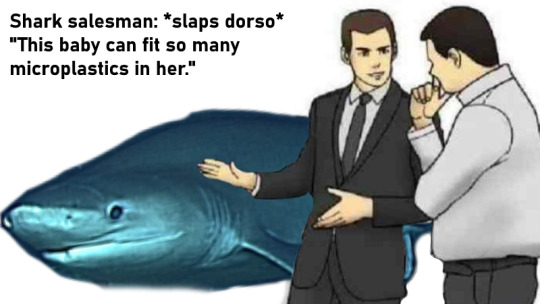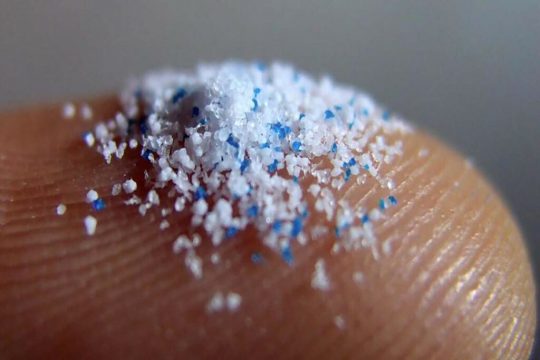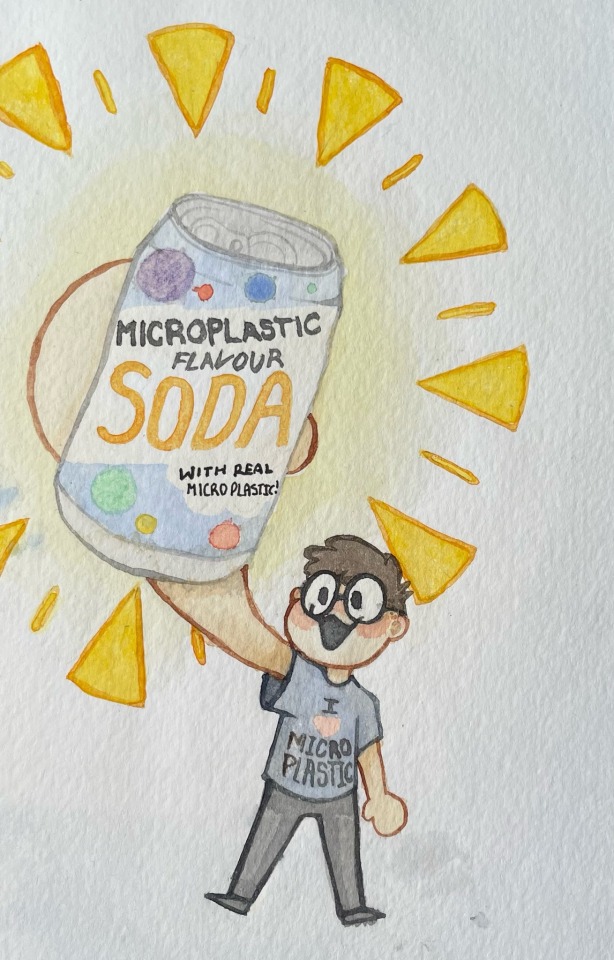#microplastic
Link
““The Great Pacific Garbage Patch can now be cleaned,” announced Dutch entrepreneur Boyan Slat, the wonderkid inventor who’s spent a decade inventing systems for waterborne litter collection.
Recent tests on his Ocean Cleanup rig called System 002, invented to tackle the 1.8 trillion pieces of plastic pollution, were a success, leading Slat to predict that most of the oceanic garbage patches could be removed by 2040.
Intersections of ocean currents have created the massive floating islands of plastic trash—five slow-moving whirlpools that pull litter from thousands of miles away into a single radius.
The largest one sits between California and Hawaii, and 27-year-old Slat has been designing and testing his systems out there, launching from San Francisco since 2013.
GNN has reported on his original design for the floating device, but his engineering team improved upon it. System 002, nicknamed “Jenny,” successfully netted 9,000 kilograms, or around 20,000 pounds in its first trial.
It’s carbon-neutral, able to capture microplastics as small as 1 millimeter in diameter, and was designed to pose absolutely no threat to wildlife thanks to its wide capture area, slow motion, alerts, and camera monitors that allow operators to spy any overly-curious marine life...
Slat estimates ten Jennies could clean half the garbage patch in five years, and if 10 Jennies were deployed to the five major ocean gyres, then 90% of all floating plastic could be removed by 2040.” -via Good News Network, 10/19/21
#great pacific garbage patch#pacific ocean#pollution#plastic#plastic waste#dutch#california#hawaii#microplastic#good news#hope
76K notes
·
View notes
Text
was laughing at the whole "water extracted from a Harkonnen is low quality because it's full of chemicals" until I realized the water from my own body probably contains enough microplastic to recreate a whole ass happy meal toy
2K notes
·
View notes
Text

MICROPLASTING FOUND IN TISSUES OF LARGE CETACEANS
Marine mammals consume large quantities of microplastic particles, likely via their food or from the surrounding seawater. Microplastics have been found in the stomachs, gastro-intestinal tracts, and feces of cetaceans and pinnipeds. Translocation of ingested microplastics has been documented in other organs of several aquatic species, but has not been examined in marine mammals. Now, tissues samples from stranded or subsistence-harvested animals between 2000 and 2021 whales colected in Alaska, California and North Carolina, USA, spanning 12 species, have revealed microplastics in the fats and lungs of two-thirds of the marine mammals. The presence of polymer particles and fibers in these animals suggests that microplastics can travel out of the digestive tract and lodge in the tissues.

-A blue microplastic fiber found in the lung tissue of a beluga whale.
The most common polymer & shape observed were polyethylene & fibers, respectively. These findings suggest some proportion of ingested microplastics translocate throughout marine mammal bodies posing an exposure risk to both marine mammals and people who depend on cetacean meat. For people, exposure could be directly through consumption for those who rely on marine mammals as food and indirectly to peoples globally who consume the same prey resources as marine mammals.
Merrill et al., 2023. Microplastics in marine mammal blubber, melon, & other tissues: Evidence of translocation. Environmental Pollution
#microplastic#marine mammals#cetacean#microplastic translocation#science#marine biology#pollution#plastic pollution
35 notes
·
View notes
Text
You are filled with microplastics, yes you
#microplastic#commentetiquette#erik#Internet Comment Etiquette#gen z#teamkill#environment#enviromental#trash#recycling#recylcing#recykling
44 notes
·
View notes
Text


#shitpost#meme#microplastic#pollution#sharks#fish#chondricthyan#bluntnose sixgill shark#hexanchus griseus
58 notes
·
View notes
Text
Archived version
3 notes
·
View notes
Text

What is Microplastic? How Does It Affect Human Health?;
https://bit.ly/3Jhcxfc
2 notes
·
View notes
Text

NEW! Microplastic Flavour Soda®! now with REAL MICROPLASTICS!! Only £1.99 at your local corner shop!!
#watercolour#watercolor#watercolour painting#watercolor painting#soda#microplastics#microplastic#microplastic soda#funny#junksart
15 notes
·
View notes
Text

So I'm working with Daphnia and their uptake of microplastic under different environmental influences at the lab. Took some fluorescence pictures and really liked how they turned out...
#daphnia#Daphnia magna#fluorescence#microscopy#fluorescence microscopy#lab#laboratory#biology#science#microplastic
7 notes
·
View notes
Text
Sometimes I wonder what All the bleach I put in my hair is doing to my body and then I remember it’s doesn’t matter because the Microplastic probably doing way much worst shit to me
2 notes
·
View notes
Link
“Headache-inducing plastic waste such as printer cartridges and plastic bags are being turned into aggregate material for asphalt road mixtures around the country.
Plastic roads have built up a head of scientific steam recently, with scientists and regulators seeing roads as a decent place to reutilize plastic that is difficult to recycle in a cost-effective manner.
Pilot programs are ongoing in Missouri, Pennsylvania, Virginia, California, and Hawai’i, with transportation regulators monitoring performance and durability of the roads, and environmental regulators on the lookout for potential microplastic contamination.
All in all plastic roads could be a big part of future societies, as the programs all show good results, and for the moment at least, no microplastic pollutant runoffs in several states.
Last year GNN reported that a stretch of Australian highway was completed with millions of used facemasks, while another in America has taken to adding shredded tires.
A stretch of road in Hawai’i between Kilaha Street and the beginning of Fort Weaver Road near Cormorant Avenue is testing a recycled polymer mixture in its asphalt that contains the equivalent of 150,000 water bottles.
Virginia officials are testing plastic in six different stretches of roads around Richmond. Results were monitored between summer of 2021 and summer of 2022.
Pennsylvania are testing two quarter-mile road stretches within Ridley Creek State Park using a mixture that contains 150,000 plastic bags.
A shoulder of Highway 99 in Elk Grove near Sacramento, California, is being paved with an asphalt mixture that contains 10% recycled plastic from printing ink cartridges. After looking and performing better than expected, a spokesperson for the CA DoT told the Pew Trust, they have expanded its coverage for further testing.
Likewise, this year’s $3.8 million budget for paving roads in Missouri included a $200,000 extra for the utilization of plastic in the asphalt mixtures.” -via Good News Network, 12/28/22
#plastic#plastic waste#microplastic#plastic pollution#transportation#asphalt#australia#missouri#pennsylvania#virginia#california#hawaiʻi#good news#hope
127 notes
·
View notes
Text
who needs plastic surgery when microplastics be turning me into an ageless doll uwu
5 notes
·
View notes
Text

16K notes
·
View notes
Link
Scientists find a quarter million invisible microplastic particles in a liter of bottled water ... and these particles are now being detected in our areteries and cells. Is this the end of the world as we know it? Not if the International Bottled Water Association has anything to say about it!
#bottledwater#bottledwaterassociation#healthcarehumor#healthcarenews#lakenriley#microplastic#nanoplastic#nursing#nursinghumor#nursingnews#riskaversionwhenrunning
0 notes
Text
Noticia: 2020 ¿Cómo estamos ahora 2024?
1 note
·
View note
Text
Microplastics' shape determines how far they travel in the atmosphere - Technology Org
New Post has been published on https://thedigitalinsider.com/microplastics-shape-determines-how-far-they-travel-in-the-atmosphere-technology-org/
Microplastics' shape determines how far they travel in the atmosphere - Technology Org
Just like the land and the ocean, the atmosphere is marred by a variety of pollutants. In recent years, a new form has been identified: micron-size microplastic debris that can be carried by the jet stream across oceans and continents.
Microplastics pose an increasing concern in oceans, on land and in the atmosphere. Image Credit: OSU
Scientists have found that the debris’s shape plays a crucial role in how far it travels.
Cornell University researchers have developed a model to simulate the atmospheric transport of microplastic fibres and show that flat fibres, which are more prevalent, travel farther in the lower atmosphere than spherical fibres.
The modelling has the potential to help scientists determine the sources of this pervasive waste, which could inform policy efforts to reduce it. The results supported by the U.S. National Science Foundation were published in Nature Geoscience.
Prior studies had overestimated their accumulation rate by treating flat fibers as spherical or cylindrical. Factoring in the fibers’ flat shape means they spend 450% more time in the atmosphere than previously calculated and therefore travel longer distances.
In addition, the modeling suggests that the ocean may play a larger role in transmitting microplastics in aerosols directly to the atmosphere than previously known, according to Qi Li, senior author of the paper.
“We can now more accurately attribute the sources of microplastic particles that will eventually be transported to the air,” Li said. “If you know where they’re coming from, then you can come up with a better management plan and policies or regulations to reduce plastic waste. This could also have implications for any heavy particles that are transported in the lower atmosphere, like dust and pollen.”
Source: NSF
You can offer your link to a page which is relevant to the topic of this post.
#aerosols#air#atmosphere#Chemistry & materials science news#debris#dust#fibers#form#Foundation#how#it#Link#management#microplastic#microplastics#model#modeling#nature#ocean#oceans#paper#particles#plan#plastic#plastic waste#Play#Policy#pollutants#Pollution#regulations
0 notes